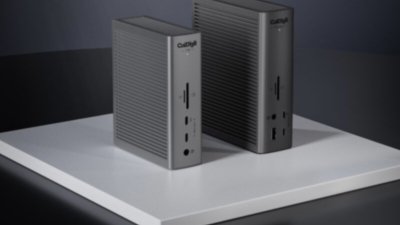Qualcomm and smartphone vendor Oppo have demonstrated a prototype of a fingerprint sensor that works under common materials used for smartphones, like displays, glass, and aluminum that will see use in consumer devices in the summer of 2018.
The new second-generation ultrasonic Sense ID fingerprint sensor technology extends the first generation that wasn't compatible with a display. Qualcomm claims that the new version of the technology can read through 650 micrometers of aluminum, 800 micrometers of glass, and 1200 micrometers of OLED display substrate, with each solution needing a slightly different sensor.
In addition to authentication, Qualcomm notes that the ultrasonic technology behind the sensor can detect heart beat and blood flow as well. Besides the obvious detection if a finger is real or not, the technology has health monitoring implications as well.
According to information provided at the release, Qualcomm uses a "trusted execution environment" which sounds to be very similar to Apple's Secure Enclave. However, the solution isn't encrypted end-to-end like Apple's.
The newly announced Snapdragon 630 and 660 processors support the technology when it comes to market. Interestingly, Qualcomm has also stated that it will support non-Snapdragon platforms as well.
The company is expecting to provide the first samples that can read through glass and metal to vendors in July 2017, with engineering samples of the sensor available in October.
Devices sporting the glass and metal technology are expected in "early 2018," with the display-enabled sensor seeing installation in the summer of 2018.
Apple filed a patent on a technology that sounds remarkably the same in October 2016. A version of fingerprint sensing through an OLED display is expected in the forthcoming "iPhone 8" in the fall.
It seems improbable that Qualcomm's technology will reach the iPhone any time soon. The pair are locked in a legal battle regarding LTE modems, and appropriate payments for the technology.
 Mike Wuerthele
Mike Wuerthele







 Andrew Orr
Andrew Orr
 Andrew O'Hara
Andrew O'Hara
 William Gallagher
William Gallagher




 Charles Martin
Charles Martin









27 Comments
Is the secret sauce Apple's sensor, or the way Apple protects/sequesters the data?
it is um. The character doesn't display in the forums.
If Apple has their own technology why would Qualcomm tech be part of the 2018 iPhone?